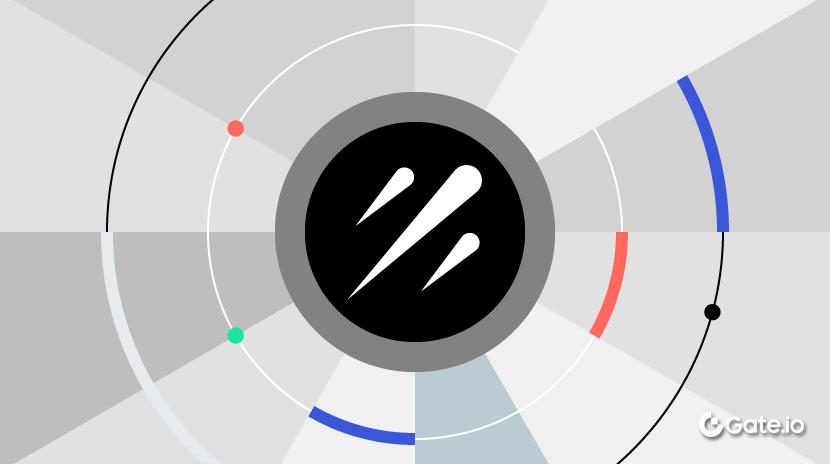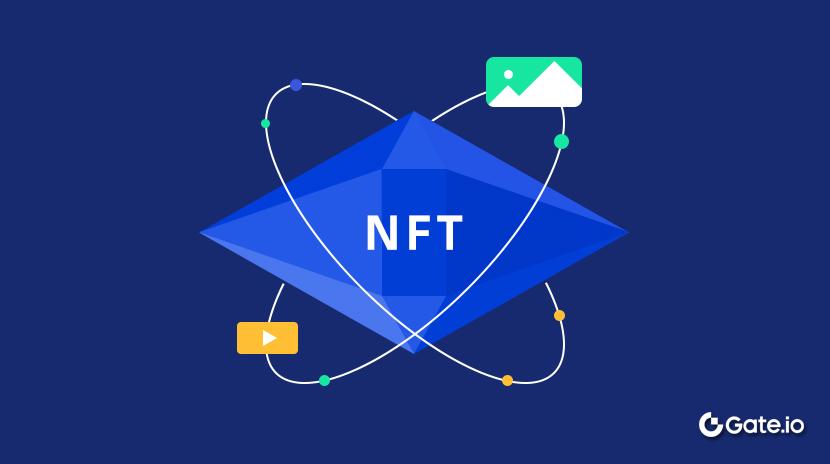Промежуточный отчет о NFT: волатильные рынки - кто на самом деле победители?
В первой половине 2024 года рынок NFT был очень волатильным.
TL,DR:
- Общие данные о транзакциях:В январе 2024 года объем сделок с NFT достиг пика в $1.28 миллиарда, что означает увеличение на 35.3% по сравнению с январем 2023 года. Однако рынок испытал флуктуации, существенное снижение в мае до $795 миллионов, что составляет 42% убытка по сравнению с апрелем.
- Многоцепочечные транзакции:Ethereum оставался доминирующей силой на рынке NFT, хотя его доля колебалась от 66,67% в январе до минимума в 45% в апреле, восстановившись до 58,22% в мае и 62,2% в июне. Биткоин, подстегнутый протоколом Ordinals, увидел свое долю рынка NFT вырасти с 9,4% в январе до 33,47% в апреле, прежде чем вернуться к 12,37% в мае и 11,76% в июне. Доля рынка Соланы оставалась относительно стабильной, в то время как у Polygon произошли значительные изменения.
- Ключевые платформы торговли NFT:Blur лидировал с долей рынка в 46,38%. Magic Eden увеличил свою долю до 11,74% благодаря поддержке мультичейн и инициативам по раздаче токенов, в то время как доля OpenSea сократилась до 15,96%. Новые платформы, такие как OKX NFT и Tensor, расширили свое присутствие на рынке благодаря инновационным стимулам.
Общий объем данных: огромная волатильность в первой половине года, с падением объема в мае
В декабре 2023 года рынок NFT достиг исторического максимума, общий объем сделок достиг приблизительно 1,7 миллиарда долларов. Продажи NFT на сети Bitcoin впервые превысили 881 миллион долларов, опередив Ethereum с 365 миллионами долларов и Solana с 325 миллионами долларов, согласно NFT Pulse.
Однако в январе 2024 года общий объем рынка NFT снизился до 1,28 миллиарда долларов, что составило снижение на 24,7% по сравнению с декабрём 2023 года. Общий тренд в первой половине 2024 года был характерен повышением, а затем снижением объемов, достигнув пика в марте на уровне 2,157 миллиарда долларов. В мае общий объем сделок с NFT снизился с 1,38 миллиарда долларов в апреле до 795 миллионов долларов, что составило резкий спад на 42%. В частности, объемы сделок с NFT на биткоине, эфириуме и Solana упали на 80,5%, 20% и 50,1% соответственно. Кроме того, число трейдеров NFT уменьшилось в мае, особенно на сети биткоина, где число трейдеров снизилось с 393 000 в апреле до 114 400.
Сравнение по годам: 2024 против 2023
Сравнение января
- Январь 2023 года:Рынок NFT зафиксировал объем транзакций почти на 946 млн долларов.
- Январь 2024 года:Объем транзакций вырос до 1,28 миллиарда долларов, что на 35,3% превышает январь 2023 года и свидетельствует о устойчивом росте рынка.
Май Сравнение
- Май 2023 г.: Объем транзакций на рынке NFT составил около 870 миллионов долларов.
- Май 2024 года:Объем упал до 795 миллионов долларов, что соответствует снижению на 8,6% по сравнению с маем 2023 года и указывает на значительное снижение на рынке.


Источники данных: NFT Pulse
Сводка
Несмотря на сильный старт 2024 года, рынок NFT испытал значительную волатильность и снижение по мере продвижения года, особенно в мае, когда как объемы транзакций, так и уровень активности снизились. Это свидетельствует о том, что рынок NFT столкнулся с серьезными вызовами в первой половине 2024 года, требуя постоянного наблюдения за будущими тенденциями на рынке и потенциалом восстановления.
Объем транзакций в нескольких цепях: доля рынка BTC расширяется, временно превышая Ethereum
В первой половине 2024 года рынок NFT заметно изменился в объеме сделок на различных блокчейнах. Вот обзор изменений доли рынка для основных блокчейнов:
- Ethereum:В 2023 году удерживал долю рынка в 72,3%. В первой половине 2024 года его доля упала, но затем восстановилась, хотя на короткое время потеряла лидирующую позицию.
- Биткойн:В 2023 году доля рынка составила 12,9%. В начале 2024 года объем сделок маркетплейса заметно колебался, достигнув пика примерно в 40%, прежде чем снова упасть до уровня около 12%.
- Solana:В 2023 году доля Solana составляла 7,4% рынка. К первой половине 2024 года доля рынка Solana значительно выросла до около 20%, поддерживая наиболее стабильную долю в условиях колебаний рынка.
- Базовый:В 2023 году у компании была незначительная доля рынка в 2,3%. В результате влияния MEME и Degen, запускающих L3, объем транзакций NFT вырос, достигнув пика в 10,62% рыночной доли.
- Polygon:В 2023 году она удерживала 2,2% рыночной доли. Объем сделок в начале 2024 года был очень волатильным, с значительными взлетами и падениями.

Источники данных: NTF Pulse
Специфические ежемесячные данные (Источник: NFT Pulse)
Январь 2024 года:
- Биткойн:9.4% доля рынка.
- Ethereum:66.67% доля рынка.
- Солана:доля рынка 17.75%.
- Polygon:5.9% доля рынка, с заметным еженедельным падением.
Февраль 2024 года:
- Биткойн:Увеличилась доля рынка до 18,37% благодаря коллекциям, таким как NodeMonkes от Ordinals.
- Ethereum:62.15% доля рынка.
- Солана:17,85% доля рынка.
- Полигон:Упал до 1,32%.
- База:Начал набирать обороты, достигнув 0,15% рыночной доли благодаря сектору MEME.
Март 2024 года:
- Биткойн:Продолжает расти до 26.02% рыночной доли.
- Ethereum:48.76% рыночная доля, с еженедельным снижением.
- Solana:21,44% доля рынка.
- База:Поднялся до 6% доли рынка к концу марта.
Апрель 2024 года:
- Биткойн:Достигла пика в 33,47%, на короткое время превысив Эфириум на 43,5% в начале апреля.
- Ethereum:Упал до 45% доли рынка.
- Solana:Незначительное снижение до около 16,37%.
- База:Поддерживаемая доля рынка 3%.
Май 2024 года:
- Биткоин:Упал до 12,37% рыночной доли.
- Ethereum:Восстановлено до 58,22%.
- Солана:Доля рынка составляет 13,5%.
- База:Поднялся до 10,62%.
Июнь 2024 (до 24 июня):
- Bitcoin:Продолжает снижаться до 11,76% рыночной доли.
- Ethereum:Восстановлено до 62,2%.
- Solana:Упал до 9,4%.
- База:Упало до 4,56%.
- Полигон:Отскочил до 15,83%.
Сводка
В целом, первая половина 2024 года принесла значительные изменения доли рынка NFT на различных блокчейнах. Объем сделок NFT BTC значительно увеличился, в значительной степени благодаря протоколу Ordinals. Доля рынка BTC выросла с 9,4% в январе до 33,47% в апреле, на короткое время превысив Ethereum. Хотя доля BTC снизилась до 12,37% в мае и 11,76% в июне, его общий рост оставался крепким.
Ethereum, несмотря на некоторые колебания, удерживал своё доминирующее положение. Его рыночная доля снизилась с 66,67% в январе до 45% в апреле, но восстановилась до 58,22% в мае и 62,2% в июне. Solana оставалась относительно стабильной, в то время как у Polygon наблюдалась значительная волатильность, подскочив до 15,83% в июне.
Эти изменения подчеркивают динамичную природу рынка NFT и конкурентный потенциал различных блокчейнов. Поскольку продолжают появляться новые протоколы и проекты, доля рынка NFT, вероятно, будет продолжать развиваться, предлагая участникам как возможности, так и вызовы в ближайшие месяцы и годы.
Изменения доли рынка в маркетплейсе: Blur впереди, Magic Eden временно лидирует в конце мая и начале июня
Доля рынка ведущих NFT-маркетплейсов в 2023 году
- Размыть:Благодаря таким стратегиям, как стимулы в виде воздушных капель, отсутствие комиссий за транзакции и отказ от взимания роялти у создателей, Blur превзошел OpenSea, став лидером рынка NFT и захватив 47,61% рынка. Этот подход привлек множество пользователей, особенно тех, кто стремится максимизировать прибыль от торговли.
- OpenSea:Несмотря на ожесточенную конкуренцию, OpenSea удержал свои позиции в качестве ведущей платформы для NFT с долей рынка в 20,36%. Будучи давно установленной платформой, она оставалась любимой для многих пользователей, особенно в экосистеме Ethereum.
- X2Y2:В 2023 году имел среднюю долю рынка в размере 8,79%. Он начал год сильно, но к концу года его доля упала до незначительного уровня. Изначально X2Y2 привлекло множество пользователей низкими комиссиями за транзакции и политикой без роялти, но его конкурентное преимущество со временем уменьшилось.
- OKX NFT:В 2023 году OKX сделал значительный прорыв, достигнув средней доли рынка в 7,4%, сосредоточившись на экосистеме BTC и став ключевой платформой для Ordinals NFT во второй половине года. Поддержка OKX множества цепочек и транзакций без комиссий привлекла многих пользователей, особенно в пространстве Bitcoin.
- Magic Eden:Удерживая 2,66% рыночной доли, в основном на рынке Solana NFT. Его доля значительно выросла к концу 2023 года благодаря расширению на несколько блокчейнов, включая Bitcoin.


Источники данных: NFT Scan
В целом рынок NFT продемонстрирует значительные изменения в доле рынка в 2023 году. Основные платформы торговли NFT продолжат инновационно развиваться в технологиях и пользовательском опыте, а также привлекать и удерживать их, расширяя поддержку мультицепочек и вводя различные механизмы вознаграждения пользователей. Эта разнообразная конкурентная среда не только способствует развитию каждой платформы, но и способствует процветанию и прогрессу всего рынка NFT.
Доля рынка основных рынков NFT в 2024 году (на 24 июня)
- Размыть:Продолжает лидировать с долей рынка 46,38%, в основном благодаря операциям с Ethereum, транзакции с Blast chain составляют всего 0,56%.
- OpenSea:Несмотря на ожесточенную конкуренцию и отсутствие инновационных мер в этом году, доля рынка OpenSea сократилась до 15,96%. Тем не менее, платформа по-прежнему остается ключевой торговой площадкой NFT, особенно в экосистеме Ethereum, с большой базой пользователей.
- X2Y2:Доля рынка стала незначительной, практически исчезая из конкурентной обстановки.
- OKX NFT:Сохраняет стабильную производительность с долей рынка около 5,37%. Поддерживая несколько блокчейнов, таких как Ethereum, Solana и BSC, OKX NFT привлекает множество пользователей своим удобным интерфейсом и низкими комиссиями за транзакции.
- Магический Эдем:Расширил свою долю рынка до 11,74%, став крупной платформой для Solana и BTC NFT. Его стратегия расширения и потенциальные планы раздачи значительно увеличили его пользовательскую базу и объем торговли.
- Тензор:Увеличил свою долю рынка до 4,49% в первой половине года благодаря планам поощрения airdrop. Стратегия Tensor значительно усилила вовлеченность пользователей и торговую активность.


Источники данных: NFT Scan
Oписание
Из приведенной выше информации видно, что Blur и Magic Eden проявили себя особенно ярко в 2024 году. Хотя OpenSea потерял некоторую долю рынка, он по-прежнему занимает важное положение. Новые платформы, такие как OKX и Tensor, постепенно увеличивают свое влияние на рынок благодаря инновационным стратегиям стимулирования.
Заключение
В первой половине 2024 года рынок NFT испытал значительные колебания и общую нестабильность. Несмотря на запуск Bitcoin ETF, привлекающий новый капитал, это не привело к заметному росту рынка. Вместо этого недавний крутой спад вызвал панику, приведя к резкому падению объемов транзакций и настроения инвесторов. Эта волатильность подчеркивает высокий риск и неопределенность на рынке, оставляя вопрос о том, увидит ли рынок NFT бычий рынок в будущем, по-прежнему без ответа.
Отказ от ответственности:
- Эта статья взята изИсследования ChainFeedsс авторским правом, принадлежащим оригинальному автору [ХОМЯК]. Если у вас есть возражения против этого повторного издания, пожалуйста, свяжитесь с Gate Learnкоманде, и они незамедлительно решат проблему в соответствии с соответствующими процедурами.
- Отказ от ответственности: Взгляды и мнения, выраженные в этой статье, принадлежат только автору и не являются инвестиционными советами.
- Команда Gate Learn перевела на другие языки эту статью. Без упоминанияGate.com, переведенная статья не может быть скопирована, распространена или украдена.
Похожие статьи

Что такое OpenSea и как его использовать? Руководство для начинающих

Что такое Galxe (ранее Project Galaxy)? Все, что вам нужно знать о GAL 2025


О чем вообще Owlto Finance?

Что такое HOT кошелек в Telegram?


